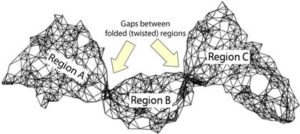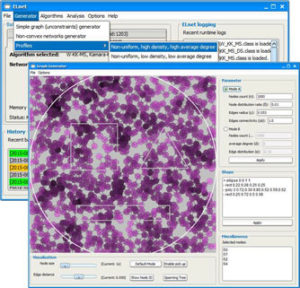Complex non-convex ad hoc networks (CNCAH) contain intersecting polygons and edges. In many instances, the layouts of these networks are also not entirely convex in shape. In this paper, we propose a Kamada-Kawai based algorithm called W-KK-MS for boundary node detection problem, which is capable of aligning node positions while achieving high sensitivity, specificity and accuracy in producing a visual drawing from the input network topology. The algorithm put forward in this paper selects and assigns weights to top-k nodes in each iteration in order to speed up the updating process of nodes. We also propose a novel approach to detect and unfold stacked regions in CNCAH networks. Experimental results show that the proposed algorithms can achieve fast convergence on boundary node detection in CNCAH networks and are able to successfully unfold stacked regions. The design and implementation of a prototype system called ELnet for analyzing CNCAH networks is also described in this paper. The ELnet system is capable of generating synthetic networks for testing, integrating with force-directed algorithms, and visualizing and analyzing of algorithms’ outcomes.
The author’s version of a work that was accepted for publication can be downloaded from http://eric.lostcity-studio.com/wp-content/uploads/2019/08/Boundary-node-detection-and-unfolding-of-complex-non-convex-ad-hoc-networks.pdf. Se-Hang Cheong, and Yain-Whar Si. "Boundary node detection and unfolding of complex non-convex ad hoc networks" ACM Transactions on Sensor Networks (TOSN) 14.1 (2017): 1.



